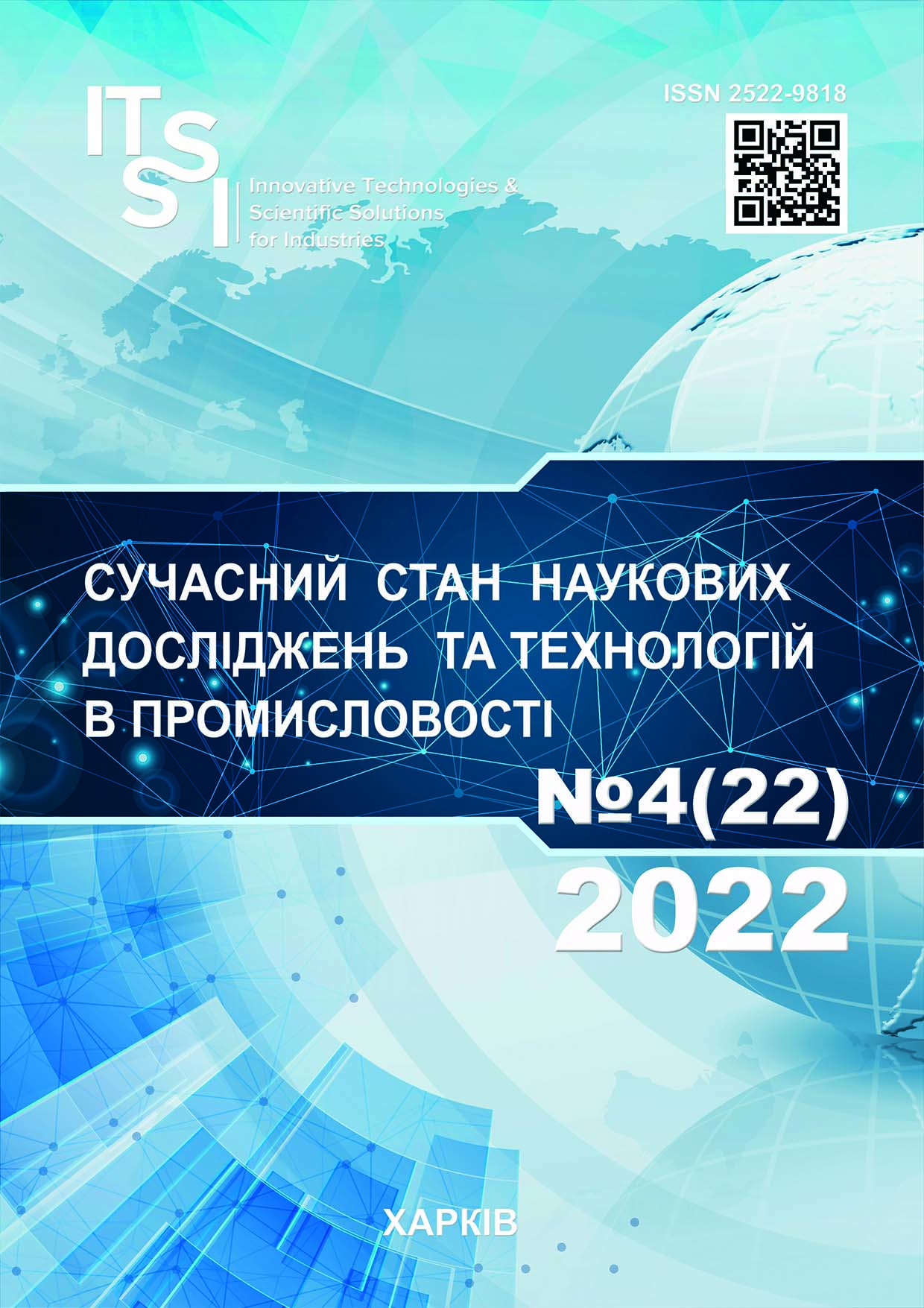GENERALIZED MODEL OF THE ADS-B UNMANNED AERIAL VEHICLE DATA TRANSMISSION PROCESS IN A STEGANOGRAPHIC SYSTEM
DOI:
https://doi.org/10.30837/ITSSI.2022.22.014Keywords:
unmanned aerial vehicles, security, ADS-B system, steganography, direct spectrum enhancement technology, data protectionAbstract
The subject of the article is a model of the ADS-B data transmission process of an unmanned aerial vehicle in a steganographic system using direct spectrum expansion technology. The aim of the publication is to improve the security of unmanned aerial vehicles with an integrated ADS-B system. Particular scientific tasks: analysis of basic methods of ADS-B format data protection; development of the scheme of ADS-B drone data transfer in steganographic system with the use of direct spectrum expansion technology; improvement of the model of ADS-B drone data transfer in steganographic system with the use of direct spectrum expansion technology; determination of qualitative and quantitative characteristics as well as security properties of ADS-B format data. The following research results were obtained: as the result of the scientific works analysis the hypothesis about the perspectives of the ADS-B format steganographic data protection usage was put forward; the scheme of an unmanned aerial vehicle ADS-B data transmission in the steganographic system with the usage of the direct spectrum spreading technology was developed; the main safety properties as well as the safety parameters and characteristics of the ADS-B format information signal were formulated; the generalized model of an unmanned aerial vehicle ADS-B data transmission was further developed. This will improve the safety of UAVs. The advantages and disadvantages of the model were revealed, which allowed to determine the priority of further research and possible promising ways of solving the assigned tasks.
References
Manesh, Mohsen Riahi & Kaabouch, Naima (2017), "Analysis of vulnerabilities, attacks, countermeasures and overall risk of the Automatic Dependent Surveillance-Broadcast (ADS-B) system", International Journal of Critical Infrastructure Protection, Vol. 19 (C), P. 16–31. DOI: https://doi.org/10.1016/j.ijcip.2017.10.002
Semenov, S., & Zhang, M. J. (2022), "Comparative studies of methods for improving the cyber security of unmanned aerial vehicles with the built-in ADS-B system", Advanced Information Systems, 6 (4), Р. 69–73. DOI: https://doi.org/10.20998/2522-9052.2022.4.10
Kuznetsov, A., Serhiienko, R., Kovtun, V., Botnov, A. (2010), "Use of Complex Discrete Signals for Steganographic Information Security", Statistical Methods of Signal and Data Processing (SMSDP2010), Р. 143 – 146.
Yihong, Gao (2022), "The analysis on the direct sequence spread spectrum communication system", Proc. SPIE 12175, International Conference on Network Communication and Information Security (ICNCIS 2021), Vol. 12175. DOI: https://doi.org/10.1117/12.2628421
Kuznetsov, A, Onikiychuk, A, Peshkova, O, Gancarczyk, T, Warwas, K, Ziubina, R. (2022), "Direct Spread Spectrum Technology for Data Hiding in Audio", Sensors (Basel), Vol. 22 (9), P. 3115–3138. DOI: https://doi.org/10.3390/s22093115
Kuznetsov, A., O. Smirnov, A. Arischenko, I. Chepurko, A., Onikiychuk, and Kuznetsova, T. (2019), "Pseudorandom Sequences for Spread Spectrum Image Steganography" In Proceedings of the International Workshop on Cyber Hygiene (CybHyg-2019) Co-Located with 1st International Conference on Cyber Hygiene and Conflict Management in Global Information Networks, Vol. 2654.
Smirnov, O. A. (2012), "Method steganography hiding and withdrawal given in spatial area of the scenes with use the direct expansion of the spectrum", Information Processing Systems, Vol. 3 (101), Р. 56–61.
Natarajan, Thangadurai & Kh, Chetna. (2017), "A Review on Recent Trends in Software Defined Radio Design and Applications", International Journal of Advanced Research in Electronics and Communication Engineering (IJARECE), 6, Р. 1021–1025.
Iranian, M. E., Mohseni, M., Aghili, S., Parizad, A., Baghaee, H. R. and Guerrero, J. M. (2022), "Real-Time FPGA-Based HIL Emulator of Power Electronics Controllers Using NI PXI for DFIG Studies", in IEEE Journal of Emerging and Selected Topics in Power Electronics, Vol. 10, No. 2, Р. 2005–2019. DOI: https://doi.org/10.1109/JESTPE.2020.3023100
Gaurav, Jajoo, Yogesh, Kumar, Sandeep, Kumar Yadav, Bibhas, Adhikari, Ashok, Kumar, "Blind signal modulation recognition through clustering analysis of constellation signature", Expert Systems with Applications, Vol. 90, 2017, P. 13–22. DOI: https://doi.org/10.1016/j.eswa.2017.07.053
Soulat, H., Stephen, E.P., Beck, A.M. et al. (2022), "State space methods for phase amplitude coupling analysis". Scientific Reports 12, No. 15940. DOI: https://doi.org/10.1038/s41598-022-18475-3
Kuznetsov, A., Smirnov, A., Gorbacheva, L., Babenko, V. (2020), "Hiding Data in Cover Images Using a Pseudo-Random Sequences", In Proceedings of The Third International Workshop on Computer Modeling and Intelligent Systems (CMIS-2020), Vol. 2608, Р. 646–660.
Kostenko, P. YU., Simonenko, C. N., Semenov, S. G., Vasyuta, K. S. ( 2009), "Povysheniye skrytnosti khaoticheskikh signalov pri peredache binarnykh soobshcheniy", Radioelektronika, Vol. 52, No. 8, Р. 13–25.
Knyazev, V., Lazurenko, B., Serkov, A. (2022), "Methods and tools for assessing the level of noise immunity of wireless communication channels", Innovative Technologies and Scientific Solutions for Industries, No. 1 (19), P. 92–98. DOI: https://doi.org/10.30837/ITSSI.2022.19.092
Ruban, I., Kuchuk, H., Kovalenko, A. (2017), "Redistribution of base stations load in mobile communication networks", Innovative technologies and scientific solutions for industries. Kharkiv., No. 1 (1), P. 75–81.
Downloads
Published
How to Cite
Issue
Section
License

This work is licensed under a Creative Commons Attribution-NonCommercial-ShareAlike 4.0 International License.
Our journal abides by the Creative Commons copyright rights and permissions for open access journals.
Authors who publish with this journal agree to the following terms:
Authors hold the copyright without restrictions and grant the journal right of first publication with the work simultaneously licensed under a Creative Commons Attribution-NonCommercial-ShareAlike 4.0 International License (CC BY-NC-SA 4.0) that allows others to share the work with an acknowledgment of the work's authorship and initial publication in this journal.
Authors are able to enter into separate, additional contractual arrangements for the non-commercial and non-exclusive distribution of the journal's published version of the work (e.g., post it to an institutional repository or publish it in a book), with an acknowledgment of its initial publication in this journal.
Authors are permitted and encouraged to post their published work online (e.g., in institutional repositories or on their website) as it can lead to productive exchanges, as well as earlier and greater citation of published work.














